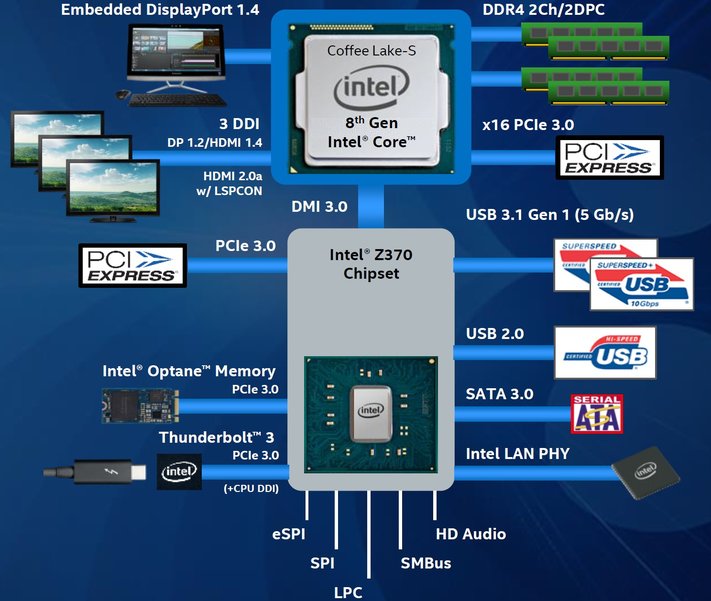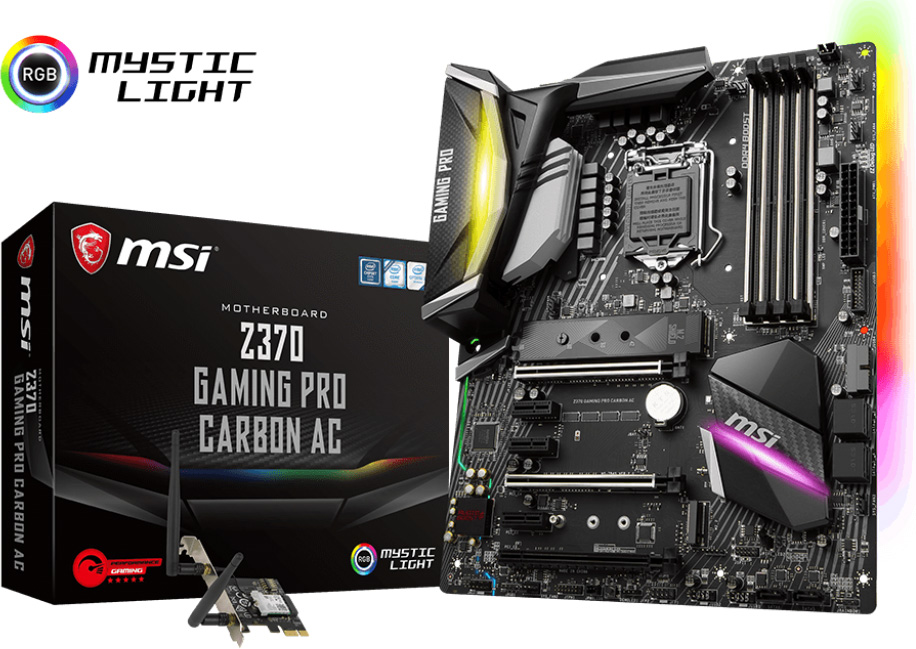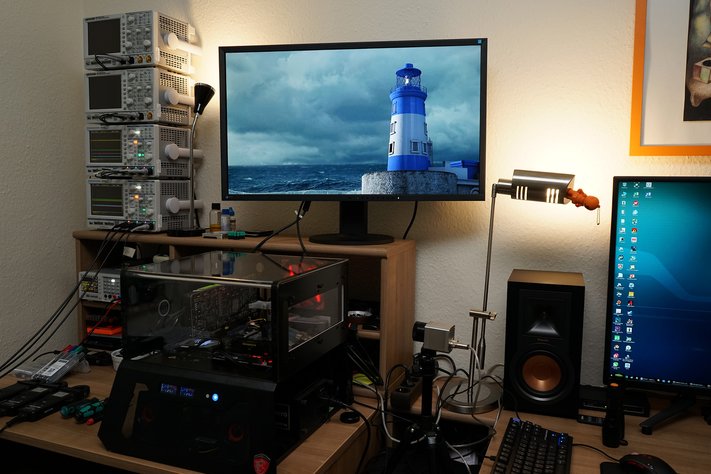The Z370 chipset
At first glance, not much has changed about the chipset itself, except that Intel has now reopened up to AMD and has the top three in the nomenclature. PCIe connectivity remains unchanged at 16 Lanes PCIe 3.0, which are available to the user with identical PCIe configuration options. Intel, however, offers up to 40 lanes for the entire platform, after all. Of course, the additional 24 lanes are behind the DMI 3.0 connection that connects the chipset to the processor. The whole thing is very similar to a PCIe 3.0 x4 port and can be very large in the amount of connected devices, such as B. M.2 SSDs. The new structure shows the following schema:

The Z370 chipset, manufactured in 22 nm, absorbs 6W of power, which is identical to the Z270 chipset. The key specifications are also almost identical, such as: Up to 10 USB 2.0, 14 USB 3.0 and six SATA 6Gb/s ports. Intel has also added support for Thunderbolt 3 to the chipset, but provided little details about the implementation. The chipset also supports Intel's Optane memory.
The dual-memory channels with up to two DIMMS per channel (DPC) and a maximum of 64 GB of memory are also the same. Intel does not support ECC on any of the new models, while AMD frees up the option for motherboard manufacturers to enable support.
The MSI Z370 Gaming Pro Carbon AC
MSI continues the Z-series of Gaming Pro motherboards chronologically and again gives the current offshoot similar features to the previous models. In the end, the price positioning on the market should also be similar. The exact board details and specifications can be found on the manufacturer's side if you are interested.

Test setup and technical data
We have already described the new test methodology in the basic article "How we test graphics cards, as of February 2017" in great detail and so we now only refer to this detailed description for the sake of simplicity. So if you want to read everything again, you are welcome to do so.

In this case, only the hardware configuration with CPU, RAM, motherboard, as well as the new cooling is different, so that the summary in table form quickly gives a brief overview of the system used here and today:
| Test systems and measuring rooms | |
|---|---|
| Hardware: |
Intel Socket 1151 (Z370): Intel Core i7-8700K, Core i7-8700 MSI Z370 Gaming Pro Carbon AC 2x 8GB G.Skill TridentZ DDR4-3200-2666 MHz Intel Socket 2066 Intel Core i9-7800X MSI X299 Gaming Pro Carbon AC 4x 4 GB G.Skill RipJaws IV DDR4-2666 AMD Socket AM4 Workstation Intel Socket 1151 (Z270): All systems: 1x 1 TByte Toshiba OCZ RD400 (M.2, System SSD) |
| Cooling: |
Alphacool Ice Age 2000 Chiller Alphacool Ice Block XPX Thermal Grizzly Kryonaut (for cooler change) |
| Monitor: | Eizo EV3237-BK |
| Housing: |
Lian Li PC-T70 with expansion kit and modifications Modes: Open Benchtable, Closed Case |
| Power consumption: |
non-contact DC measurement on the PCIe slot (Riser-Card) non-contact DC measurement on the external PCIe power supply direct voltage measurement at the shunts, the respective feeders and the power supply Reading out the motherboard sensors 2x Rohde & Schwarz HMO 3054, 500 MHz multi-channel oscillograph with memory function 4x Rohde & Schwarz HZO50, current togor adapter (1 mA to 30 A, 100 KHz, DC) 4x Rohde & Schwarz HZ355, touch divider (10:1, 500 MHz) 1x Rohde & Schwarz HMC 8012, digital multimeter with storage function |
| Thermography: |
Optris PI640, infrared camera PI Connect evaluation software with profiles |
| Acoustics: |
NTI Audio M2211 (with calibration file) Steinberg UR12 (with phantom power for the microphones) Creative X7, Smaart v.7 own low-reflection measuring room, 3.5 x 1.8 x 2.2 m (LxTxH) Axial measurements, perpendicular to the center of the sound source(s), measuring distance 50 cm Noise in dBA (Slow) as RTA measurement Frequency spectrum as a graph |
- 1 - Einführung und Test-Setup
- 2 - Chipsatz, Mainboard und Test-Setup
- 3 - 3DMark, VRMark, Civilization AI Test
- 4 - Ashes of the Singularity: Escalation
- 5 - Battlefield 1
- 6 - Civilization IV
- 7 - Warhammer 40K: Dawn of War III
- 8 - Project Cars
- 9 - Far Cry Primals
- 10 - Hitman (2016)
- 11 - Rise of the Tomb Raider
- 12 - DTP, Office, Multimedia und Kompression
- 13 - Workstation 2D- und 3D-Performance
- 14 - CPU-Computing und Rendering
- 15 - Wissenschaftlich-technische Berechnungen und HPC
- 16 - Übertaktung, Leistungsaufnahme, Temperaturen
- 17 - Zusammenfassung und Fazit
































Kommentieren